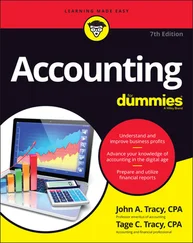The company in this example sells products on credit . The business offers its customers a short period of time to pay for their purchases. Most of the company’s sales are to other businesses, which demand credit. (In contrast, most retailers selling to individuals accept credit cards instead of extending credit to their customers.) In this example the company collected $51,680,000 from its customers during the year. However, some of this cash inflow was for sales made in the previous year. And, some sales made on credit in the year just ended had not been collected by the end of the year.
At year-end the company had receivables from sales made to its customers during the latter part of the year. These receivables will be collected early next year. Because some cash was collected from last year’s sales and some cash was not collected from sales made in the year just ended, the total amount of cash collections during the year differs from the amount of sales revenue for the year.
Cash disbursements during the year are not the correct amounts for measuring expenses. The company paid $34,760,000 for products that could be sold to customers. At year-end, however, many products were still being held in inventory . These products had not yet been sold by year-end. Only the cost of products sold and delivered to customers during the year should be deducted as expense from sales revenue to measure profit. Don’t you agree?
Furthermore, some of the company’s product costs had not yet been paid by the end of the year. The company buys on credit and takes several weeks to pay its bills. The company has liabilities at year-end for recent product purchases and for operating costs. Further complicating the situation, the company makes cash payments during the year for operating expenses and interest and income tax expenses, but these are not the correct amounts for measuring profit for the year. The company has liabilities at the end of the year for unpaid expenses. The cash outflow amounts shown in Exhibit 1.1do not include the amounts of unpaid expenses at the end of the year.
In short, cash flows from sales revenue and for expenses are not necessarily the correct amounts for measuring profit for a period of time. Many types of cash flows take place too late or too early so they cannot be used to correctly measure profit for a period. Correct timing is needed to record sales revenue and expenses in the right period. The amounts of cash flows caused by sales and expenses could turn out to be fairly close to the correct accounting amounts—or, they could be vastly different. Even small differences between the cash flow amounts and the correct accounting amounts can cause problems.
Cash Flows Do Not Reveal Financial Condition
The cash flows summary for the year does not reveal the financial condition of the company. Managers certainly need to know which assets the business owns and the amounts of each asset, which can include cash, receivables, inventory, among others. Also, they need to know which liabilities the company owes and the amounts of each.
Business managers have the responsibility for keeping the company in a position to pay its liabilities when they come due. In other words, managers have to keep the business solvent (able to pay its liabilities on time) and liquid (having enough available cash to meet its needs). Furthermore, managers have to know whether assets are too large (or too small) relative to the sales volume of the business. A company’s lenders and investors want to know the same things.
In brief, both the managers inside the business and the lenders and investors outside the business need a summary of a company’s financial condition (its assets and liabilities). They also need a profit performance report, which summarizes the company’s sales revenue, expenses, and profit for the year.
In this chapter we have explained that a cash flows summary has its limits—in particular, it does not report profit and does not present the financial condition of a business. Nevertheless, a cash flows summary is useful. In fact, a different version of what is shown in Exhibit 1.1is one of the three primary financial statements reported by every business. But in no sense does a cash flows summary take the place of the profit performance report or the financial condition report. The next chapter introduces these two financial statements. Chapter 3then moves on to the statement of cash flows, which is a more formal financial statement than the summary discussed in this chapter.
A Final Note Before Moving On
Over the past century (and longer) the accounting profession has developed. One of its main functions is to prepare and report business financial statements. A primary goal of the accounting profession has been to develop and enforce accounting and financial reporting standards that apply to all businesses. In other words, there is an authoritative “rule book” that businesses should obey in accounting for profit and in reporting profit, financial condition, and cash flows. Businesses are not free to make up their own individual accounting methods and financial reporting practices. The established rules and standards are collectively referred to as generally accepted accounting principles (GAAP). But things are getting more complicated these days.
Presently in the United States there are continuing developments to adopt separate rules for private companies versus public companies, and for small companies versus larger companies. Furthermore, efforts to harmonize American accounting and financial reporting standards with those of other countries keep slogging along. There has been a lot of standardization. Yet, there are several areas of accounting and financial reporting in which there are differences between countries. We say more about the changing landscape of accounting and financial reporting standards in later chapters.
2 TWO BEDROCK FINANCIAL STATEMENTS
Need for Financial Information
Business managers, lenders, and investors need to know the financial condition of a business. They need a report that summarizes the business entity’s assets and liabilities, as well as the ownership residual of its assets in excess of liabilities. And they need to know the profit (or loss ) performance of the business. They need information that summarizes sales revenue and expenses for the most recent period and the resulting profit or loss.
The means of communicating such financial information are financial statements . Accountants prepare the financial statements. They are the financial scorekeepers of the entity. Financial statements are sent regularly by a business to its managers, lenders, and investors—and, anyone else with a legitimate interest in the business for that matter. Financial condition is communicated in an accounting report called the balance sheet . Profit-motivated activities are presented in an accounting report called the income statement.
Alternative titles for the balance sheet include the statement of financial condition or the statement of financial position . An income statement may be titled as a statement of operations or an earnings statement . We stick with the names balance sheet and income statement to be consistent throughout the book. Informally, financial statements are called simply financials .
In almost all cases financial statements are supplemented with additional information, which is presented in footnotes and supporting schedules . One very common supporting schedule is the statement of changes in stockholders’ (owners’) equity . The broader term financial report refers to all this, plus any additional commentary from management, narrative explanations, graphics, and promotional content that accompany the financial statements, footnotes, and supporting schedules. Distribution of the financial reports of a private business may be restricted to its top-level managers, its shareholders, and major creditors. Federal laws require publicly owned businesses to make their financial reports publicly available.
Читать дальше












